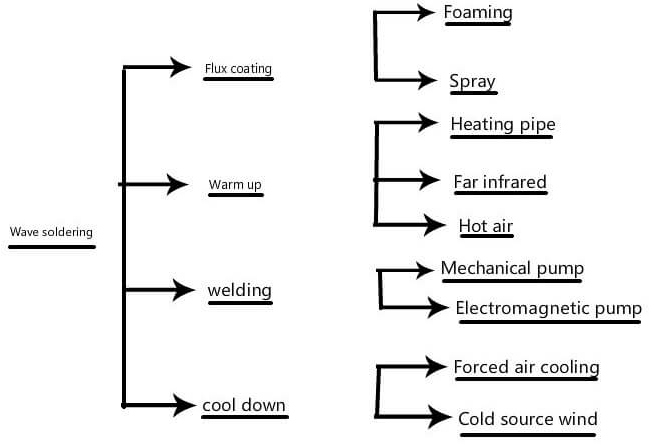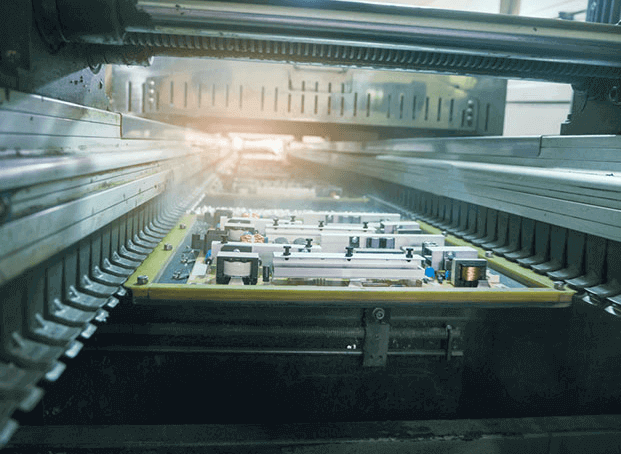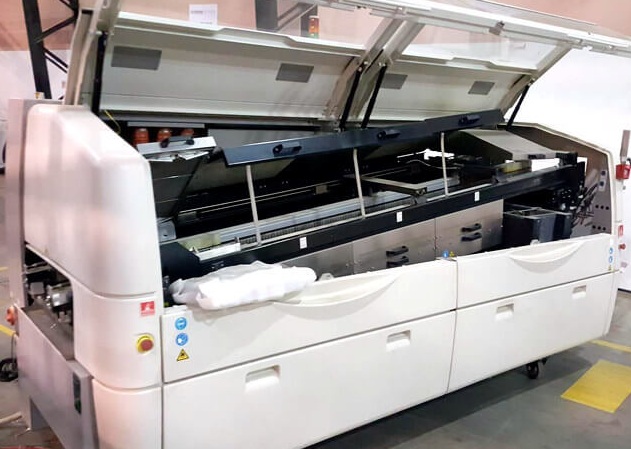All the techniques may not be suitable for all purposes. Where one technique fails, another technique produces effective soldering and creates strong joints between metals. Wave soldering is one such technique that uses a wave of solder to assemble the PCBs. It is a bulk soldering process and is mostly used for commercial purposes. The main advantage of wave soldering is it is fast and can solder bulk quantities of PCBs in a short time. Besides, the [process is affordable and it produces solid joints. The following article explains the process of wave soldering, its advantages, and its practical applications.
What Exactly is Wave Soldering?
Wave soldering is the process of soldering the printed circuit board by passing it over a wave of solder.
The wave soldering process can solder a complete board in a few seconds. Besides, it produces joints that are solid than the conventional soldering process. The joints are stable both electrically and mechanically. It is due to these reasons that wave soldering is preferred for assembling PCBs on a large scale for commercial purposes. You can use the wave soldering process for both hole-mounted components and surface-mounted components. But, the latest methods like infra-red reflow soldering is more suitable for surface mounted components on PCB. Hence, the use of wave soldering has considerably decreased in the last few years.
Pros of Wave Soldering
It is suitable for THT (Through Hole Technology) assembly It solders PCBs within a few seconds It is preferable for mass assembly of commercial PCBs It is very affordable It initiates less warpage It produces strong joints both mechanically and electrically
Wave Soldering Machine
In the wave soldering machine, the solder is kept on a heated tank. The tank has to be maintained at the required temperature throughout the soldering process. Inside the tank, the solder is set up in the form of waves. PCBs pass over the waves in a way just their underside contacts the solder wave. You should set the height of the soldering wave so that it does not flow over the top side of the board. Otherwise, the solder will flow all over the board. Metal fingers hold the board tightly on a conveyor during this process. The metal fingers have a high melting point so that they can withstand the temperature and the solder. Titanium is one of the most commonly used metals for this purpose.
Preparation
There are two main steps involved in processing electronics PCBs using a wave soldering machine. They are as follows,
Solder Resist Layer
The first step is to coat a layer of solder mask or solder resists over the PCB. The solder mask protects the PCB from oxidation and prevents the solder bridge. The solder mask covers all areas of the PCB except the parts where you need to solder the copper pads. In most cases, the solder mask is in green color which increases the copper pads’ visibility. But depending on the design of the end product, the solder mask color can be selected to complement the appearance of the overall product. Blue and red are the other common colors that the solder mask comes in.
Pad Spacing
While coating the solder mask, you have to ensure that there is enough space between the solder pads. If two solder pads are close to each other, it may cause a solder bridge. A solder bridge is a connection formed by two solder pads that were not meant to be connected. This unintentional connection can lead to short circuits. Besides, you have to consider the direction of the solder wave and the board direction. Solder bridges are prone to occur frequently in the direction of solder flow. So, solder pads in the direction of solder the wave should have more spacing between them than the pads that are located at right angles to the solder wave.
Fluxing
Before starting the soldering process, you have to apply flux over the PCB. The flux removes the oxidation layer that is present on the surface of the board. Besides, it also prevents the formation of new oxidation layers. The flux is acidic. So, you should be careful not to apply too much flux. Otherwise, the excess flux will degrade the quality of the board. On top of that, it will also spoil the appearance of the board. Contrarily, if you use little flux, it will increase the risk of developing poor joints. There are two methods to apply flux on PCBs. They are as follows,
Spray Flux
As the name suggests, the flux is sprayed over the underside of the board. Then, you have to use a compressed air jet to remove the excess flux.
Foam Flux
In this, a tank is filled with flux and a plastic cylinder with holes is immersed into it. A metal chimney covers the plastic cylinder and the air is forced through the cylinder. As a result of this, the flux rises. When a PCB passes over this flux foam, the flux is applied over the surface.
Preheat
In the wave soldering process, PCBs are subjected to greater levels of heat than in other soldering processes. Due to this high temperature, PCBs may undergo a thermal shock. The thermal shock can cause the board to fail. To prevent this, PCBs undergo a process of preheating so that their temperature rises gradually. Thermal shocks occur when the temperature rises suddenly. Preheating of PCBs is done using hot air heaters. The hot air heaters blow hot air over the PCBs before they pass towards the wave soldering machine. In some cases, infra-red heaters are used to preheat the PCBs. This heats the PCB uniformly without any hot and cold spots. Apart from preventing thermal shocks, preheating also activates the flux. The flux then removes the oxidation layer and makes the surface clean for soldering.
Applications of Wave Soldering in PCB Assembly
In recent years, the use of wave soldering has decreased considerably. This is because the process is not suitable for soldering surface-mounted components and fine pitches used in the boards today. Besides, there are other new procedures such as infra-red reflow soldering that do a better job in soldering the above-mentioned type of boards. Yet, still, the wave soldering process is most commonly used for conventionally leaded components. They are suitable for mass assembling of PCBs as they can solder them within a short time frame. Comment * Name * Email * Website
Δ








![]()